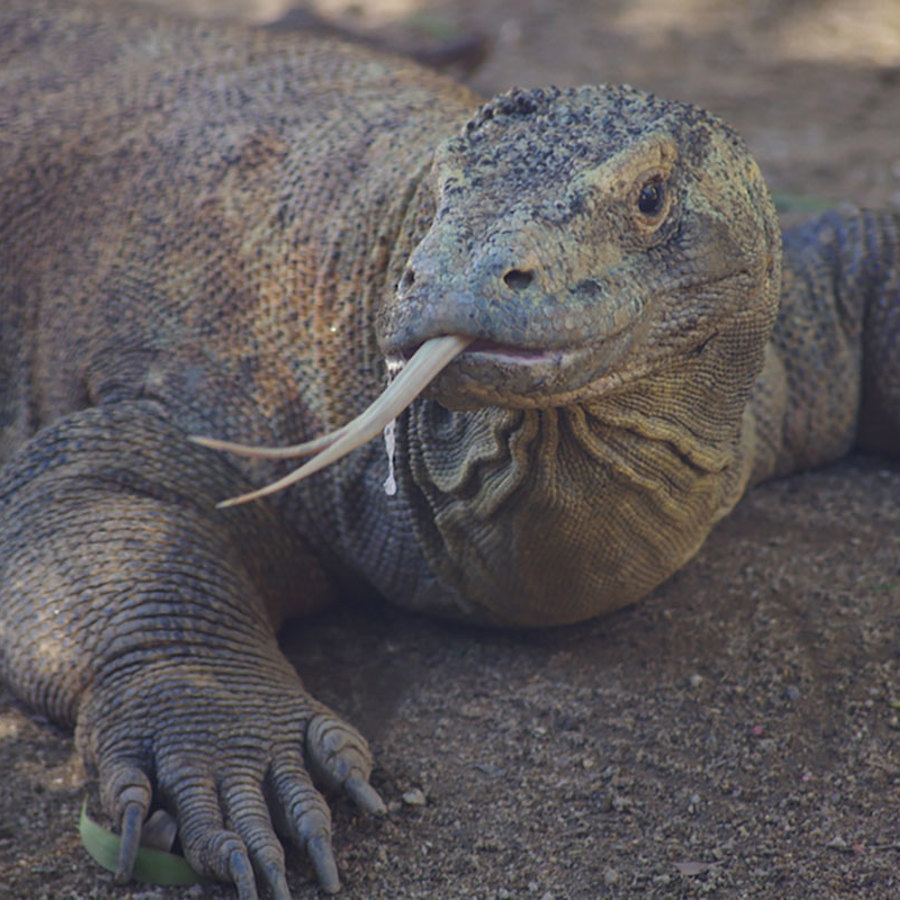
Are baby Komodo dragons clones of their mom?
June 7, 2016

- Related Topics:
- Animal biology,
- Parthenogenesis,
- Reproduction,
- Meiosis
A curious adult from California asks:
“I am fascinated by the story of the Komodo dragon that became pregnant without a male being involved. Is it true that these baby Komodo dragons are not clones of mom?”
There are ~70 animal species, including snakes, lizards, and Komodo dragons, where no dad is needed. These “virgin births” are called parthenogenesis.
You might think if it is just mom supplying the DNA, then all the babies would just be little clones of mom. But surprisingly, they’re not.
Why not? For that we need to go into how eggs are made. And how virgin births happen with just an egg.
Old School vs. Komodo Dragon Style
If humans had babies like Komodo dragons sometimes do, there'd be no need for sperm banks. Well, not unless mom wanted a little extra genetic variety from dad.
Normally, babies get half their DNA from their biological mom and the other half from their biological dad. This happens when a sperm from the dad fertilizes an egg from the mom. Sperm and eggs are called sex cells, and both are made by a process called meiosis.
Meiosis is a little complicated, but the bottom line is that each sperm ends up with only half of dad’s DNA, and each egg ends up with only half of mom’s DNA. (Click here for a video of a more detailed, yet pretty simple, explanation of meiosis.)
One egg (containing half mom’s DNA) and one sperm (containing half dad’s DNA) fuse together to eventually make a baby (with half mom’s and half dad’s DNA).
It is a different story for a virgin birth. There are a couple of ways that scientists think it can happen but we are going to focus on the simplest.
In the simple case, the half set of DNA in the egg simply doubles. Now you have the right amount of DNA!
But surprisingly, doubling half your DNA is not the same as getting a copy of the full set of your DNA.
Of course, our first clue should have been that our mama Komodo dragon only has boys! The clone of a genetic female is never a male. Thus, mama Komodo dragon’s babies could not possibly be her clones!
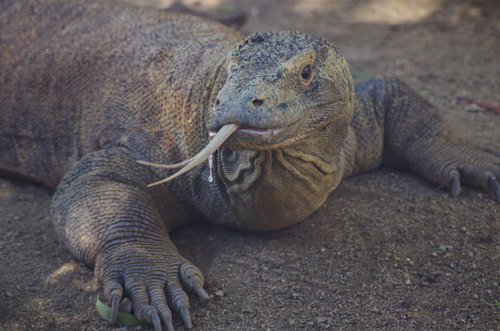
When 2 x ½ is Not the Same as 1
To see why this is, let’s imagine that a woman had babies by doubling the DNA in her egg like a Komodo dragon sometimes does. And that she has AB blood type.
Turns out that none of her kids would be AB like her—they’d all be A or B. Let’s see how this works.
Scattered throughout your DNA are the genes that make up the instructions for making you. Each gene has the instructions for one small part of you.
Each of these genes is found on a long piece of DNA called a chromosome. People typically have 23 pairs of chromosomes. One from each pair comes from mom and the other from dad.
The gene responsible for A, B, AB, and O blood type, called the ABO gene, is found on chromosome 9.
Since we have two copies of each chromosome, we have two copies of each gene too. And the key to understanding why the result of a virgin birth is not a clone is the fact that the copies don’t have to be the same.
The ABO gene comes in three different versions (or alleles), A, B, and O. Since we have two copies of the ABO gene, one on the chromosome from mom and one from dad, here are the various possible combinations and their blood type:
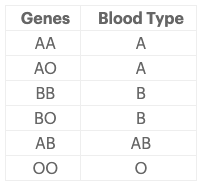
So, for example, if you got an A from mom and an A from dad, you’d be A blood type. (Click here for more on blood type, including why AO is also A blood type.)
In our example, mom is AB which means she has an A allele and a B allele. Let’s draw it like this:


The blue rectangle represents chromosome 9 and the letter the ABO allele. So mom has one chromosome with an A allele (left rectangle) and one with a B allele (right rectangle). This is why she has AB blood.
What we’ll do next is show a simplified version of what happens when she makes her eggs.
First, each chromosome doubles:


Then, eventually, they get to one chromosome 9 per egg:
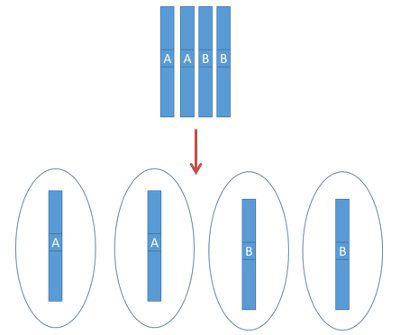

(Remember, this is happening at the same time in the other 22 pairs of chromosomes as well. For simplicity, we are just showing one chromosome and only one allele on that chromosome.)
Through a process we won’t go over, three of these possible eggs are lost, leaving just one. We’ll say that we are left with the egg that just has the A allele.
If this chromosome were to double, like during parthenogenesis, you’d end up with:
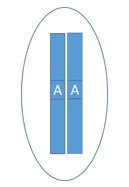

Going back to our blood type chart, you can see that AA is A blood group. If a B egg had survived instead, it would be BB, which is B blood type. Since this child has a different blood type, he is not a clone.
Now let’s take it to all the chromosomes. Imagine mom looks like this:
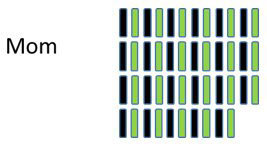

She has 23 pairs of chromosomes. I have drawn the ones she got from mom in black and the ones she got from dad in green.
Imagine that one of her eggs ends up with this combination like this:
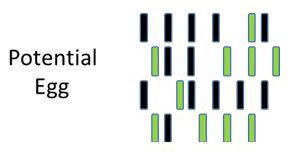

As you can see, her egg has one from each pair.
Now here is what happens when this DNA doubles:
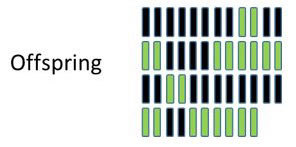

You can see that mom and her offspring are not identical!
So that is why when Komodo dragons have babies without a dad they aren’t just clones of mom. In fact, with Komodo dragons, it is even more obvious that they aren’t clones. The babies are all boys!
A Virgin Birth Gives Males (For Komodo Dragons)
For most animals, whether you are genetically a boy or a girl is determined by which sex chromosomes you have.
In people this is decided by the X and the Y chromosome. Genetic males have an X and a Y and genetic females have two X’s.
This is why in people, dad determines the sex of the baby. Mom can only give an X, but dad can give an X or a Y. If baby gets X from mom and X from dad, then genetically the baby is a girl. If baby gets X from mom and Y from dad, then the baby is a boy.
Here is how it works:


Komodo dragon’s instructions for sex determination are a little different. Males are ZZ, and females are ZW.
So now imagine we have our ZW mom. Here is her pair of ZW chromosomes:


Now let’s say she is going to have a baby on her own. Here are her possible eggs:
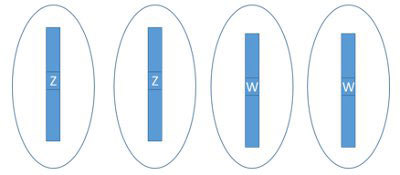

Now, during parthenogenesis, the DNA doubles in each egg:
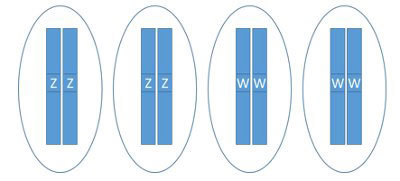

So her possible babies are either ZZ or WW. Since ZZ is genetically male and WW do not survive to birth, she can only have males. Even though there is no dad, she only has sons.
(For people, mom could only have girls as all the children would be XX.)
Why do Komodo Dragons (and Other Animals) Have Virgin Births?
This strange phenomenon is probably the result of Komodo dragon’s isolated natural habitat. Komodo dragons live on the islands of Indonesia.
Scientists speculate that Komodo dragons (and other animals who can use parthenogenesis to reproduce) resorted to such desperate measures when females find themselves washed up alone on neighboring shores.
Instead of the species dying out because there wasn’t a male to mate with in sight, females adapted the ability to reproduce without needing a male. And of course making her own mates in the process!
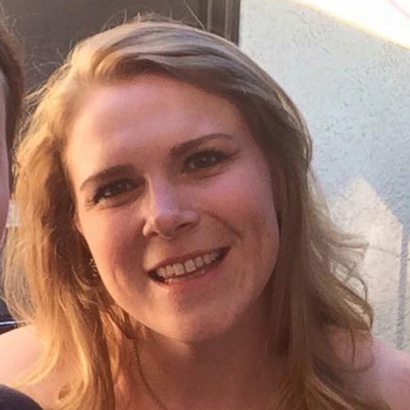
Author: Dr. Lauren Liddell
When this answer was published in 2016, Lauren was a post-doctoral fellow in the Department of Genetics, studying how coral genetically responds to climate change in John Pringle’s laboratory. Lauren wrote this answer while participating in the Stanford at The Tech program.
 Skip Navigation
Skip Navigation
